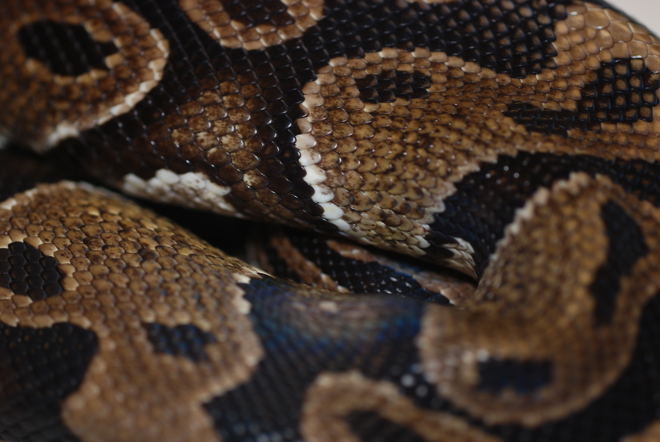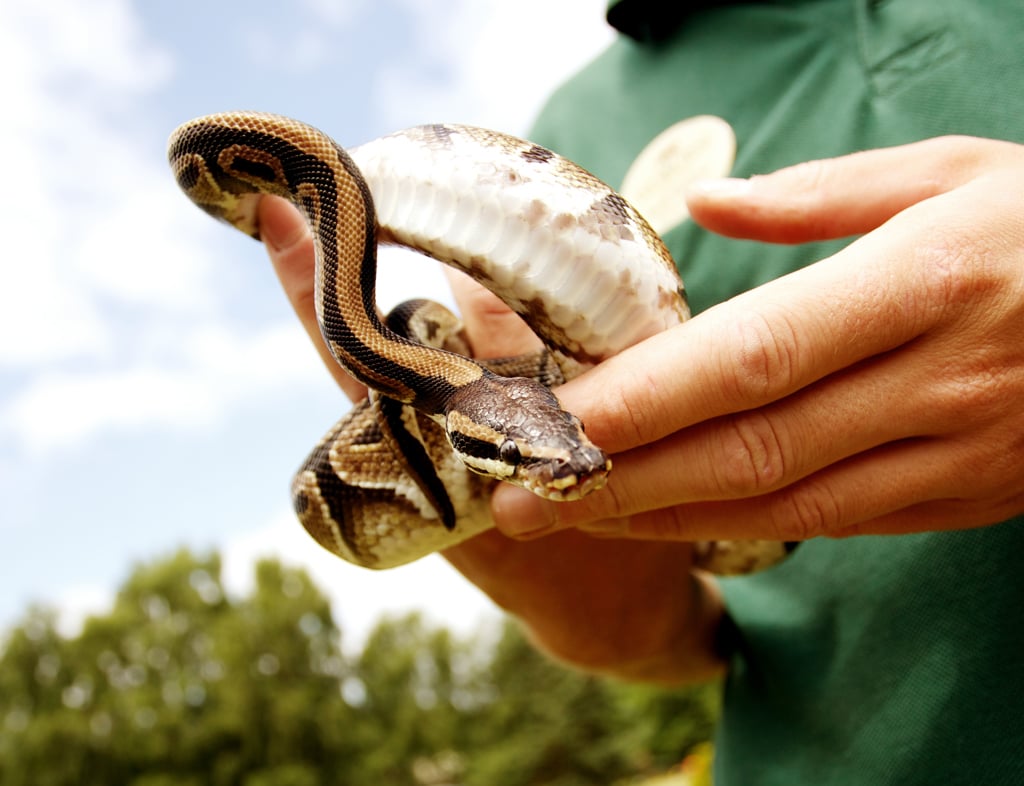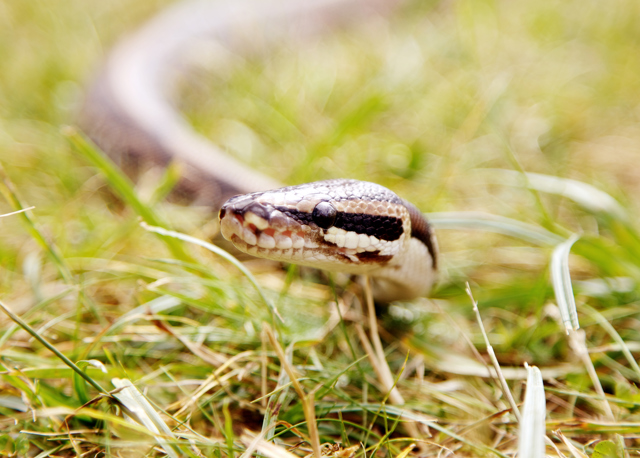
Overview
These well-tempered reptiles are timid and shy. When they gradually unravel from their ball position they slowly start to move. They flick their tongues to help them smell, identify and survey their surrounding environment.
Come and meet some of Woburn’s smaller reptiles in 'Reptile Ranch' (only open at set times throughout the day).

All about us
| Distribution: | Western, Eastern and Central Africa |
|---|---|
| Habitat: | Savannahs, open woodland, scrub forest and grassland |
| Height: | Up to 5 ft in length |
| Weight: | Approximately 1400g |
| Lifespan: | 20-30 years in captivity, but it is not uncommon for them to reach 40 years |
| Threats: | Hunted for meat and for their skin |
About us
Scientific name: Python regius
These snakes are also called ball pythons because of their defensive posture of coiling into a tight ball with their heads protected in the centre of the coil, thus protecting itself from predators when threatened.
Ball pythons are strikingly, attractive snakes. The patterns and colours vary depending on the geographic location, from being striped, spotted, banded, rectangular, and blotched.

The breeding season is primarily from mid-September through mid-November, correlating with the rainy season. Females may mate with several males. During courtship, the male wraps himself around the female's body, stimulating her cloaca with his spurs. Spurs are remnants of when pythons had hind legs; they are generally hidden below scales on either side of the vent (genital). If mating is successful, the female will stop eating whilst the eggs are being developed.
Royal pythons have long reproductive lives that last from about 27 months to 30 years. Clutch size therefore varies with the age and size of the snake. Females lay their eggs in a burrow where she will immediately coil protectively around them, using heat generated by muscle twitches. The incubation period lasts for about two months, at which point the eggs hatch and young are left to fend for themselves.
Royal pythons are non-venomous constrictors. Firstly, a python will strike and bite their prey in order to obtain a firm grip, and then it quickly wraps one or more coils of its body around the victim. The python then squeezes the prey tightly; unable to expand their lungs to breathe, the prey suffocates. They feed on a variety of prey.
Young hatchlings tend to feed on lizards and other young snakes, while adults feed on larger prey, such as birds, mammals, amphibians, snake eggs and other reptiles. It swallows the food whole, usually head first.
The patterns and colours vary depending on the geographic location, from being striped, spotted, banded, rectangular, and blotched. The colour pattern is black or dark brown, with light brown or gold sides and dorsal blotches. Some ball pythons have yellow stripes running from the nostrils through the eyes, and all have ivory bellies.
They are stocky, robust snakes with a slender neck and distinctive head; the head being larger than the neck. The scales are smooth. This sexual dimorphism is not present in neonates (baby snakes), but is apparent in adults. Adult females are larger than adult males.
Royal pythons are exploited for the pet trade, in West Africa many thousands are captured annually and exported. This species is also hunted for meat and for their skin to make tourist products or souvenirs; in addition farmers may kill royal pythons out of fear. Further research and monitoring into the harvest levels of this species is suggested. Improved captive breeding strategies may help in reducing the pressure from the pet trade. This species is listed on CITES Appendix II which means they have been assessed as least concern as the suspected population decline is not large enough to warrant threatened status.
The name royal python is believed to be derived from the fact that many African rulers were known to have worn live pythons as jewellery.
Snakes usually only have one thin lung. However, pythons have two lungs, one of which is considerably smaller than the other. They also have remnants of hind legs and pelvic bones.

